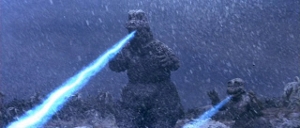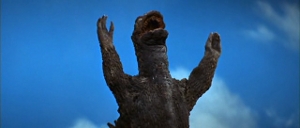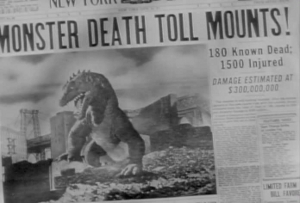
Watching Tarantula‘s opening, with its lonely shots of California’s Lucern Valley (once again standing in for Arizona), you can tell Jack Arnold really wanted to direct a Western. Of the four films he made in 1955, three were set in the Great American West and two were authentic Westerns: the one he made right before Tarantula (The Man from Bitter Ridge) and the one he made right after (Red Sundown). The blasted, lunar landscapes of the Mojave lend an expansive, mythic air to even the silliest drama, or the most serious monster picture.
Better yet, aside from some dated technobable and some really dated sexism, Tarantula isn’t even all that silly. Its got a weird, almost-retro atmosphere to it, thick as Jupiter’s but much more permeable…if you were lucky enough to grow up on Universal monster movies. (And I certainly was…can’t you tell?) All the classic horror tropes we learned to crave are present and accounted for…except for the thunderstorm and the Old, Dark Castle. We’ll excuse the thunderstorm’s absence on account of this taking place in “Arizona”…where, I suppose, a two-story ranch house is as good a castle-analogue as you’re likely to find. The only problem is, the movie forgoes focusing on those tropes in favor of building a mystery. A mystery the movie solves with its title.
I say Arnold “wanted” to make Westerns in the full knowledge that what director’s wanted didn’t really matter much in 1955’s Hollywood. Tarantula‘s no auteur‘s vision; it’s a quickly made, cheap knock-off of a rival studio’s hit from the previous year. There’d be no Tarantula without the surprise success of Them! and the parallels between the two are on fairly obvious display. Continue reading Tarantula (1955)









